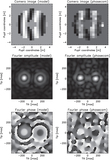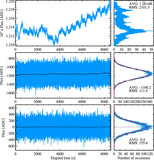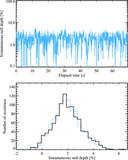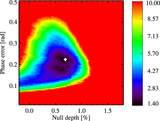Image Details
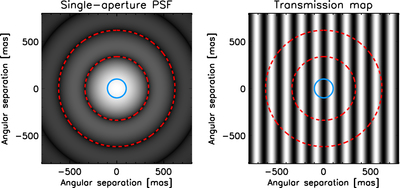
Caption: Figure 3.
Illustration of LBTI monochromatic single-aperture PSF (left) and interferometric transmission map (right) computed for a wavelength of 11.1 μm over a 1.″5 × 1.″5 field of view, assuming a purely east-west 14.4 m baseline (north is up, east is to the left). The dashed red lines indicate the position of the first two minima of the single-aperture PSF. The solid blue line indicates the position of Earth's orbit around the Sun located at 10 pc and seen face-on. It is resolved by the interferometer but not by the single-aperture PSF. The PSF is displayed with a square root stretch to better show the first Airy ring, while the transmission map is shown with a linear stretch.
Copyright and Terms & Conditions
© 2016. The American Astronomical Society. All rights reserved.




